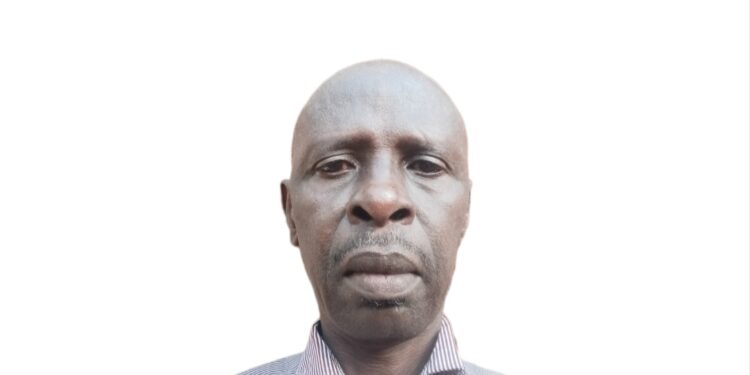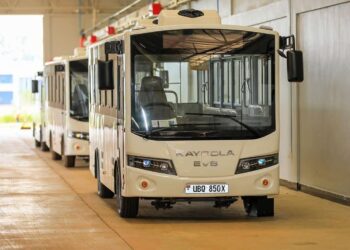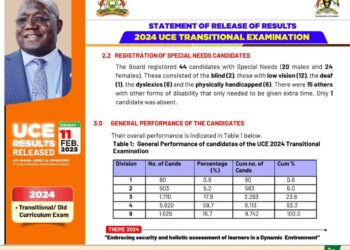I congragulate HE the president of the Republic of Uganda and all Ugandans for commissioning the start of constructing the Malaba-Kampala SGR Railway. It is rather unusual to make a big deal about starting a project rather than completion.
But as an African and a Ugandan at that, I appreciate the enormous challenges mega projects face right from the concept stage hence require very strong political blessings. To reach the commissioning stage is another project of its own especially given that colonialists took away our minds and left most of us with empty brains. The colonialists are still controlling our minds and this time remotely like witchdoctors. There is no human dimension in interpersonal relationships. Remember the words of the late Stephen Berko the ANC fighter, “the most potent weapon of the oppressor is the mind of the oppressed”. These heroic words cost him his life.
The transport system of East Africa has been monopolised by two traditional colonial corridors, the Northern corridor from Mombasa and the central corridor from Dar es Salaam. These corridors form the backbone of the multi-modal transport and logistics chain, converge in Kampala with branches to the shores of Lake Victoria and to other countries. There is a choice between three modes, roads, railways and to a smaller extent, water. For the railways system, the Northern corridor was the preferred option for transporters to Uganda since it was always more efficient than the central corridor. However, just before concession of the Railways, the central corridor had picked up and often proved more efficient due to use of marine vessels across Lake Victoria. The concessioning of the railways systems in East Africa killed the railways mode of transport for over a decade.
The causes and impact of the collapse of the railways concessions have never been fully analysed let alone understood but they affected the railways system in many ways, some of which are hard to reverse. For example, the human resource was destroyed, the infrastructure went into disrepair and the entire system became derelict. While the infrastructure can be rebuilt, rebuilding the human resource is a very difficult assignment that requires highly specialised and resilient commitments rarely found in our part of the world. Till now, MGR structures cannot be effectively revived by the respective governments leading to perennial operational losses.
The current Infrastructure bonanza in East Africa, even with little expertise, demonstrates that not all is lost and that African governments can work if they decide.
Indeed, if for anything, the NRM deserves another term just for infrastructure let alone for the peace and security.
The SGR projects are the most amazingly outstanding infrastructure milestones by all measures – historically, politically, socially, economically, even environmentally and geographically. These projects, if implemented across Africa, will catalyse the objectives of the African Continental Free Trade Area and other development Plans.
Possibly for reasons of confidentiality or genuine lack of knowledge, Ugandan SGR planners have not subjected the regional aspects of SGR to public scrutiny. They have to inform the public that the SGR will not and cannot replace other modes of transport but will be a component of a multimodal transport and logistics system. The regional nature of the SGR also needs to be properly articulated to generate solid strategic plans and policies that guide the future of the transport sector and benefit traders and transporters.
The SGR system is a regional issue. For Uganda, there are three access SGR routes. Malaba – Kampala, Mwanza – Kampala and Musoma – Kampala. One arm of the SGR in Tanzania is on the outskirts of Mwanza, the other will be in Musoma by 2028. Others will be added to Rwanda, South Sudan and DRC. It is no secret that some years ago, Tanzania offered Uganda land in Tanga Port to monopolise Ugandan cargo through Musoma to Kampala. This protocol is yet to be actualised.
But not all that shines is gold. The benefits of the SGR and other infrastructure projects and their off-shoots depend on very sound and well informed management and strategic planning practices right from concept, feasibility studies, design, implementation and operation in order to achieve efficient and competitive transport services.
There is an article online on the SGR Uganda website titled “comparison of construction costs between SGR Uganda, Kenya, Tanzania and Ethiopia’. It is a good article but with several erroneous and misleading conclusions about the viability of the TZ SGR to mwanza without offering solutions.
Aware, or maybe not, that the SGR is on the outskirts of Mwanza in Tanzania and that Uganda has just commissioned construction of Malaba – Kampala section while Kenya is looking for funds for the Naivasha – Malaba connection, the article asserts that the central corridor SGR is not viable because
There is need for transhipment of goods leading to increased transit times and costs
Port infrastructure is not good in Uganda and Tanzania
The available wagon ferries are few and building a wagon ferry takes three years.
It will take 3 days (72 hours) transit for goods from Dar es salaam to Kampala while it takes a maximum of 24 hours from Mombasa to Kampala
There will be 40 trains per day between Mombasa and Kampala each transporting 216 teus totalling 8640 teus to Kampala daily.
These facts are there but need solutions to make the investment viable not flat lamentations like the article makes of it.
It is true that if Uganda and Tanzania do not improve or modernise Lake Victoria port infrastructure, then there will be need for transhipment of goods, which will lead to increased costs and transit time on the central SGR corridor. This should be looked at as a challenge requiring the attention of policy makers. It should be brought to the attention of Policy making hierarchy like URC, TRC, TPA, Ministries responsible for works and Transport in both countries, the Joint Permanent Commission of TZ and UG or the EAC infrastructure Committee or the Infrastructure Committee of Parliament with concrete proposals to ensure the success of the investment. Remember the SGR central corridor will operate for some years before the Northers SGR starts. A similar scenario currently prevails at Naivasha where there is transhipment from SGR to MGR.
The lack of port infrastructure is related to (a) above. Mwanza, Musoma and Kisumu Ports have berthing facilities for general cargo, which can be converted into container/general terminals with minor modifications for one ship. Uganda planned Bukasa Port while Port Bell needs expansion if it is to handle containerised SGR cargo even by wagon ferry. Bukasa port too requires similar ports with similar features and facilities in the partner states sharing Lake Victoria. Government can even build a port in western Uganda closer to Mwanza or offer to lease land to the Tanzanian Government to build such a port.
The concept of wagon ferries is archaic and should not even be talked about in a modern logistics setting or among serious policy makers in this 21st century. It is like talking about using a bicycle in Kampala today with all boda-bodas around. Today there are container ships transporting up to 50,000 teus (ask google). Even petroleum products are containerised depending on the quantities and distances to cover like on Lake Victoria. The SGR secretariat could visit either china or central Europe and see for themselves. In china, inland water transport handles over 3bn tons of cargo a year while on the Rhine, there are over 10,000 ships moving up and down transporting all types of cargo. I never saw a wagon ferry there. These countries have among the best roads and railway systems. Building a ship of that size whether wagon ferry or container ship does not take three years as assumed. That is too long and misleading. Kindly share the source of such misleading information. I can authoritatively assure you that if the EAC governments develop ports and have container terminals with equipment, build container ships of say 200 teus, transport across lake Victoria will prove very competitive and augment the SGR.
The TZ SGR is electric and faster than the KE SGR but of course transit times will depend on terminal infrastructure on both corridors. In 2017, GoU signed an MoU with the GoURT to have goods transit between Dar and Kampala in 24 hours once the SGR reaches Mwanza. This assurance was not baseless but depended on the technocrats to add value by planning and building the necessary infrastructure. URT must have taken this MoU into consideration during the feasibility study and before the Final Investment Decision to start building the SGR. I am sure that Uganda has not changed its position or if so has not communicated to URT. This should be done immediately by comparing available infrastructure and proposing solutions.
Though it is a good political campaign slogan, it is not possible to have 40 trains from Mombasa to Kampala everyday on the single SGR track. How many trains will stop in Nairobi or Kisumu. Will there be room for passenger trains or not? Which facilities are available to handle 8640 teus per day at the Kampala container terminal/yard?
All the foregoing issues should be well conceptualised in close interface with authorities in neghbouring countries. Online meetings can be held if there are no resources to facilitate physical engagements and have more people attending. These ports will become multimodal transport and logistics hubs to manage the growing transport demands of modern African countries and need development.
As SGR Uganda secretariat argues against the viability of the central corridor SGR, a certain company has just commissioned a ro-ro ship between Mwanza and Port bell. That argument tries to imply that the Tanzanian SGR project is a white elephant when it is actually on the outskirts of Mwanza without offering options.
The challenges to the of Central Corridor SGR are more in Uganda than in URT. The available Port area at Port bell is in itself so small and currently accommodates all types of activities. The timelines for expansion or development of other ports are not in harmony with the plans of URT. This mismatch is not political but lies at the technical level.
From the body language and the tone, it is as if the author was trying to protect the SGR on the Northern corridor against competition. If that article is the position of SGR secretariat in Uganda then the author either needs to go back for interview or update his tools of analysis or somewhere in between.
By accident or design, the SGR planners both in Uganda and URT may have overlooked some technical aspects of the necessary multimodal nature of the last leg of the Central corridor SGR and need to correct.
In our next release, we shall talk about options for efficient operationalisation of the central corridor SGR and the available financing options.
Remember mega projects like the SGR are delicate and require solid technical planning to ensure their viability.
Khabakha Bernard
Retired Marine Expert
Tel. +256777548626
e.mail: bernard.khabakha@gmail.com
Do you have a story in your community or an opinion to share with us: Email us at editorial@watchdoguganda.com













